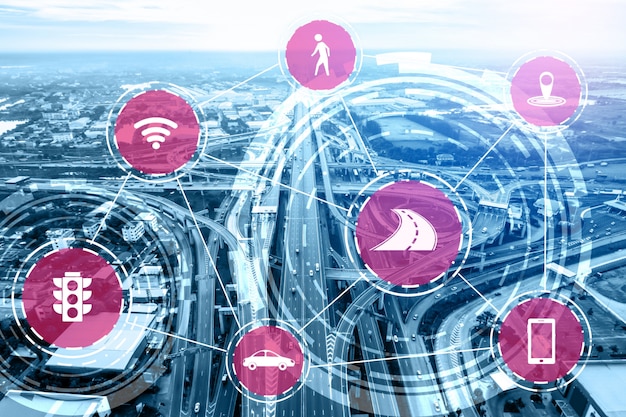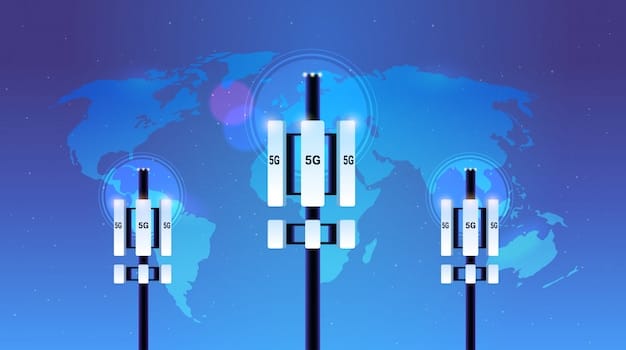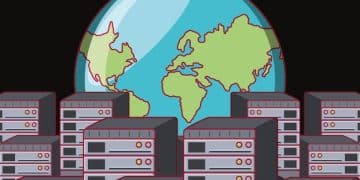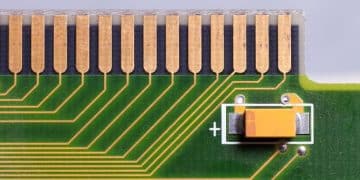5G Network Slicing: Guaranteeing 99.999% Uptime for US Infrastructure in 2025

5G network slicing ensures 99.999% uptime for critical US infrastructure by creating dedicated virtual networks optimized for specific requirements, enhancing reliability, and minimizing disruptions in essential services in 2025.
Can 5G network slicing guarantee 99.999% uptime for critical US infrastructure in 2025? This article explores how this technology is revolutionizing reliability for essential services, ensuring minimal disruptions and enhanced performance.
Understanding 5G Network Slicing
5G network slicing is a key technology for optimizing network performance. It promises dedicated virtual networks tailored for specific needs. Let’s delve into its core concepts and benefits.
What is 5G Network Slicing?
5G network slicing allows mobile operators to create multiple virtual networks on a single physical infrastructure. Each “slice” is configured to provide specific capabilities, such as different levels of speed, latency, and security.
How Does it Work?
The process involves network virtualization, software-defined networking (SDN), and orchestration. These technologies enable the dynamic allocation of network resources to meet various application requirements. This ensures that each slice operates independently and efficiently.
- Resource Allocation: Dynamically allocates bandwidth, processing power, and storage to each slice.
- Isolation: Ensures that issues in one slice do not affect other slices.
- Customization: Tailors each slice to meet the specific needs of the application it supports.
5G network slicing offers unmatched flexibility and efficiency. It supports diverse applications and maximizes infrastructure utilization. This technology ensures optimal performance and reliability for various services.

The Importance of Uptime for Critical Infrastructure
Uptime is crucial for critical infrastructure. Guaranteeing 99.999% availability can significantly reduce risks and improve service delivery. Let’s understand why this is so important.
Defining 99.999% Uptime
99.999% uptime translates to only approximately 5 minutes of downtime per year. This level of reliability is often referred to as “five nines” availability and is essential for systems where even a brief interruption can have severe consequences.
Examples of Critical Infrastructure
Critical infrastructure sectors include healthcare, transportation, energy, and public safety. These sectors rely on consistent and reliable network connectivity to function effectively and protect public safety.
- Healthcare: Supports remote surgeries, telehealth, and patient monitoring, requiring constant connectivity.
- Transportation: Enables autonomous vehicles, traffic management systems, and railway signaling, crucial for safety.
- Energy: Ensures grid stability, smart meter operations, and renewable energy management, preventing blackouts.
High uptime for critical infrastructure is not just a convenience. It’s a necessity for safety, security, and economic stability. 5G network slicing helps meet these stringent requirements by providing dedicated and reliable network resources.
How 5G Network Slicing Ensures High Uptime
5G network slicing ensures high uptime by providing dedicated and reliable network resources. This approach enhances resilience and reduces the impact of potential network issues.
Dedicated Resources
Each network slice can be allocated dedicated network resources. This prevents resource contention and ensures that critical applications always have the bandwidth, processing power, and latency required for optimal performance.
Network Isolation
Network slicing provides strong isolation between different virtual networks. This means that a failure in one slice will not affect the performance or availability of other slices, ensuring that critical services remain operational even in the event of a network issue.
Dynamic Resource Management
5G network slicing supports dynamic resource management. It allows operators to adjust resource allocations in real-time based on changing demands. The real-time adjustments enables optimization of network performance and ensure high availability.

Real-World Applications in the US by 2025
By 2025, several critical infrastructure sectors in the US are projected to benefit from 5G network slicing. These sectors include public safety, utilities, and transportation.
Public Safety
In public safety, 5G network slicing can provide first responders with reliable communication and data access during emergencies. It ensures seamless connectivity for video surveillance, real-time data sharing, and mission-critical applications.
Consider the following benefits:
- Enhanced situational awareness
- Improved coordination among emergency teams
- Reduced response times
Utilities
For utilities, 5G network slicing can support smart grids, remote monitoring of infrastructure, and automated outage management. It enables the efficient management of energy resources and minimizes the impact of disruptions.
Here are some key capabilities enabled:
- Real-time monitoring of grid conditions
- Automated fault detection and recovery
- Improved management of renewable energy sources
Transportation
In transportation, 5G network slicing can enable autonomous vehicles, intelligent traffic management systems, and enhanced passenger experiences. It ensures safe and efficient transportation operations.
Benefits for transportation include:
- Real-time traffic monitoring and optimization
- Enhanced safety features for autonomous vehicles
- Improved connectivity for passengers
Challenges and Considerations
While 5G network slicing offers numerous benefits, there are also challenges and considerations to keep in mind. Addressing these issues is crucial for successful implementation.
Security Concerns
Security is a primary concern. It needs to be ensured that each network slice is isolated and protected from cyber threats. Strong security measures are essential to prevent breaches and maintain data integrity.
Complexity of Implementation
Implementing 5G network slicing can be complex. It requires advanced network management and orchestration capabilities. Operators need to invest in the right tools and expertise to manage the virtual networks effectively.
Regulatory Issues
Regulatory issues can also pose challenges. Clear regulatory frameworks are needed to govern the use of 5G network slicing and ensure fair access to network resources. Coordination with regulatory bodies is essential which will help to address these issues.
The Future of 5G Network Slicing
The future of 5G network slicing appears promising. Ongoing advancements and wider adoption will unlock new capabilities and opportunities. Let’s explore what lies ahead.
Advancements in Technology
Ongoing advancements in network virtualization, SDN, and AI will further enhance the capabilities of 5G network slicing. These advancements will enable more efficient resource management, automated network optimization, and improved security.
Future advancements may include:
- AI-powered network optimization
- Enhanced security protocols
- Improved support for edge computing
Wider Adoption
As more industries recognize the benefits of 5G network slicing, wider adoption is expected. This will drive innovation and create new business models. The growing adoption will also lead to more standardization and interoperability.
Potential areas of expansion include:
- Manufacturing
- Agriculture
- Smart cities
Impact on Society
The widespread adoption of 5G network slicing is expected to have a significant impact on society. It can improve the efficiency and reliability of critical infrastructure, enhance public safety, and drive economic growth. The technology will help in creating a more connected and resilient world.
| Key Aspect | Brief Description |
|---|---|
| 🚀 5G Network Slicing | Creates dedicated virtual networks for specific needs on a single physical network. |
| ⏱️ 99.999% Uptime | Ensures minimal downtime (around 5 minutes per year) for critical services. |
| 🛡️ Critical Infrastructure | Supports essential sectors like healthcare, transportation, and energy with reliable connectivity. |
| 🚦 Real-World Applications | Enhances public safety, utility management, and transportation efficiency. |
Frequently Asked Questions
▼
The main benefit is the ability to create dedicated virtual networks tailored to specific application requirements, improving network performance and reliability.
▼
It ensures high uptime through dedicated resources, network isolation, and dynamic resource management, reducing the impact of network issues.
▼
Real-world applications include enhanced public safety communications, smart grids for utilities, and autonomous vehicle support in transportation.
▼
The main challenges include security concerns, complexity of implementation, and regulatory issues that need to be addressed for successful adoption.
▼
The future outlook is promising, with ongoing advancements in technology and wider adoption expected to unlock new capabilities and opportunities across various sectors.
Conclusion
In conclusion, 5G network slicing holds immense potential to guarantee 99.999% uptime for critical US infrastructure by 2025. Its ability to create dedicated, reliable, and secure virtual networks will transform sectors such as healthcare, transportation, and public safety, paving the way for a more connected and resilient future.





